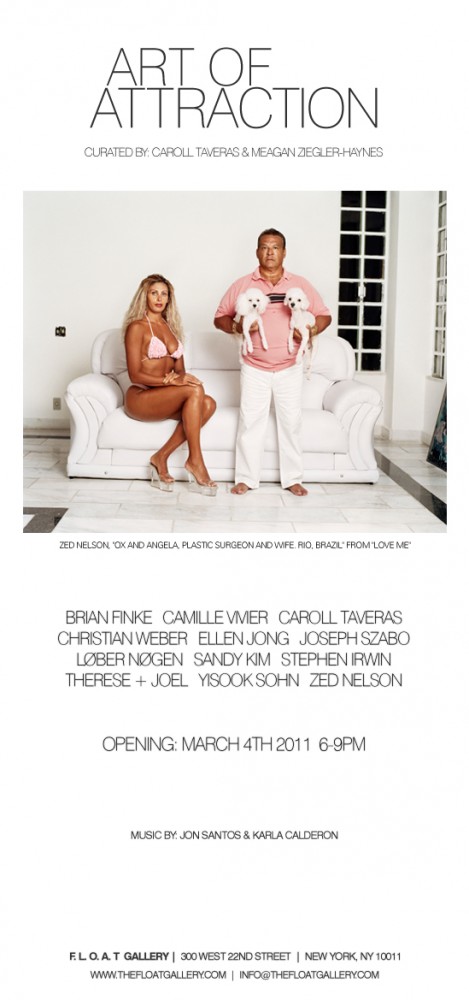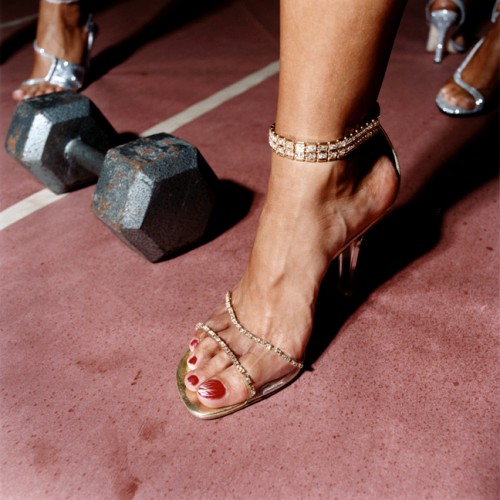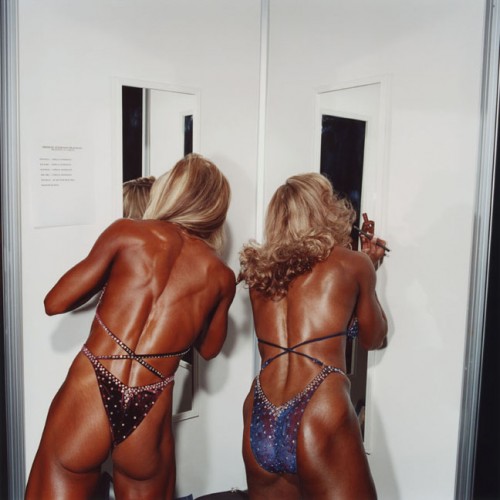



by Erica Dye
All the time, it feels like I’m in these ridiculous and unique situations, and it’s kind of wild that I’m there, in that place,” Brian Finke told, me, laughing incredulously. Going through his work, I feel the same. I am entranced by the exoticism of the everyday and find myself wondering how I got there from such a familiar environment.
Although he refers to himself as a stylized documentary photographer and is accustomed to commercial work, Fine believes that the content of an image should embrace and transcend the intention or function of it. By frequently using flash, his images contain a sense of heightened reality, and along with the saturation of his photographs, his work tends to feel larger than life while simultaneously focusing on the minutiae of the ordinary. Finke’s photographs accentuate the brief brush of a touch, an emotionally charged passing glance. “How I shoot, it’s a lot about capturing the expressions and the gestures that reveal something about the personality of the people that I’m photographing,” Finke said. “I try to focus on the characters and the subtle aspects: how someone holds themselves, their body language, their gestures.”
His ability to notice these intricacies is what differentiates him as an editorial photographer. Like most photographers on assignment for a publication, he is rarely afforded much time with subjects. Despite this, he embeds himself in a place and creates work with an emotional proximity that reflects intimacy. Considering the subject matter of his photography, one could assume that it is easy for Finke to take a critical look at his subjects. “Some of my pictures can be sarcastic. They can also be sentimental. They can also have a sense of humor. I think what makes an interesting story of images is when it touches on all those different emotions,” he said. Finke continued to explain that it would be just as easy to make overly romanticized photographs as it would to make critical or judgmental imagery, concluding that it is best to represent a realistic range of feelings.
When I look at Brian Finke’s work, I see distinct groups of people—subsets of a population all bound by a commonality. I can pick apart and formalize what binds them together: vocation, hobby, obsession, profession. More generally, I look at his work and see people expressing identity. His photography exhibits identity that is coded by clothing, as seen most obviously in his project 2,4,6,8: American Cheerleaders and Football Players. Viewers can immediately place the subjects into stereotypes by their uniforms or attire. They are bound by their physical appearance, but Finke complicates our way of seeing them by focusing on their ranging temperaments. His subjects could function as symbols or archetypes, but instead transcend stereotyping through the complexity of emotion that everyone can relate to.
Another unifying aspect of his work is demonstrated by disjointing his subjects from spaces in which they are typically seen. Finke explained, “With the project of flight attendants, it was about seeing them in their working space, but then seeing them in less familiar places was important as well. Taking them out of the context of how we’re used to looking at them and associating with them.” As he complicates our preconceptions of what is normal behavior or what is a normal environment for each of his subjects, viewers are faced with unfamiliarity, and that allows the work to feel strange.
Flight attendants smile, directing us up a staircase that leads to nothing. A cheerleader cries out, desperately grasping to those around her. A woman serenely rides atop an elephant, embracing her dear friend. There is an everyday that does not make sense to pause to think about. As a storyteller, Finke elucidates the eccentricities—which are ultimately uniting—in the everyday. It is when the familiar is made unfamiliar that we question how peculiar we all really are.









